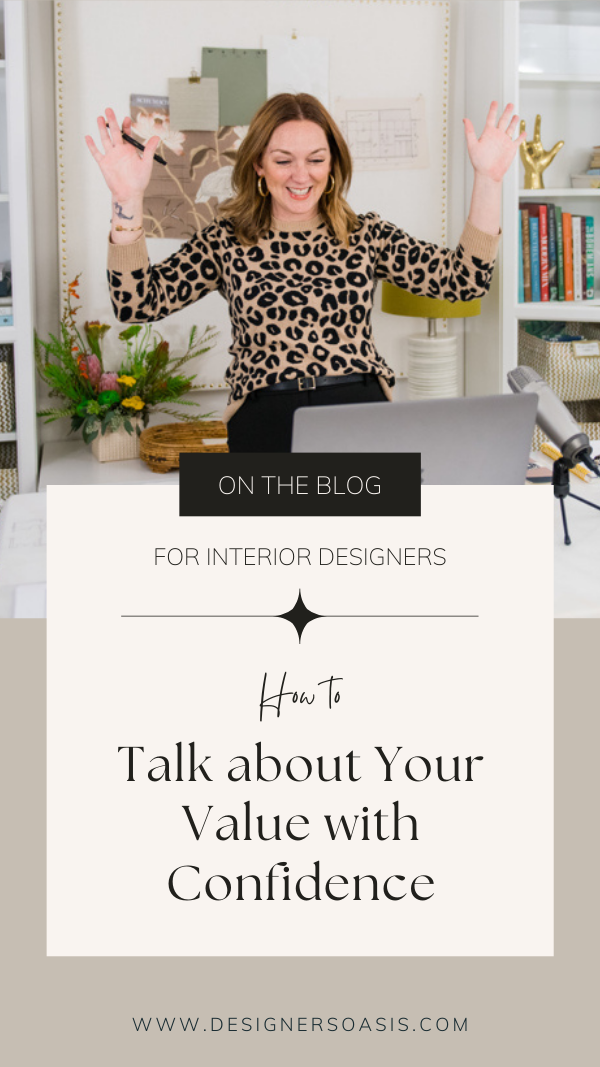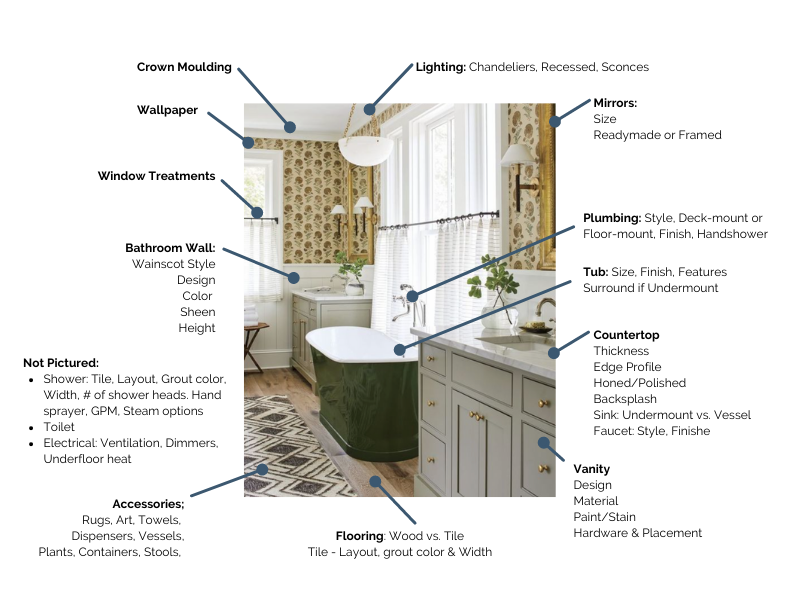Know Your Value - How to Articulate Your Value with Confidence
Do you struggle to define and promote the value of your design work? If so, you’re not alone.
This subject comes up most often when I’m working with designers who are wanting to raise their rates, but find it hard to articulate the value of their work.
When I left commercial interior design over 8 years ago to pursue a solo career in residential interior design, I found myself in the same place.
In commercial interiors, the benefits were pretty obvious. Good design can impact the owner’s bottom line, it can increase productivity in the users, it can deliver an experience for its occupants.
But in residential design, I couldn’t wrap my head around how to promote the value of my work as it related to the bottom line. It took some time (and a few business coaches), but over the years I’ve developed the ability to clearly articulate this value to my clients in a way that feels authentic and promises an experience I know I can deliver on.
If you can’t talk about the value you bring to your clients project, you won’t have work. Or you’ll struggle to find clients that are willing to pay a premium for your services.
The best website, branding, and business bling won’t close new clients if you can’t deliver a compelling and attractive promise of value.
Let’s talk about how to hone language that supports your conversations with prospective clients so you can talk about your value with total confidence.
But first, we are going to look at my favorite exercise - “The Bathroom Exercise”. A bathroom is a pretty simple space to design right? A little tile and paint your client might think?
Well, Let’s take a closer look. How many decisions actually go into designing a typical bathroom? (Although this downright dreamy bathroom designed by Heather Chadduck is anything but typical!)
Let’s assume this bathroom layout will remain exactly as is, but will get an overhaul of the finishes? Just look at all the decisions and coordination involved in this one room. Every inch is a decision. In fact, deciding NOT to do something is a decision. For example, deciding not to tile the floor and do wood instead, that’s a decision.
With this illustration in mind, let’s start to talk about how you provide your clients value.
Save Time - You save your client time. Quality time they could be spending with family and friends or working in their field of expertise. And not just time designing. When you’re involved in project management, you may have the ability to shave time off a project by strategically sequencing deliveries, installations, and other events. Meaning your clients can start to enjoy their new space sooner.
Avoid Mistakes - You save your clients from making mistakes they might face if working on their own or even with a contractor who doesn’t have the design expertise. As a designer you will be strategically coordinating multiple aspects of the design with drawings and specifications. This coordination is what helps you “see” things and avoid costly inaccuracies. Avoiding mistakes is going to prevent your client from experiencing a multitude of headaches, frustration, and fatigue throughout the process.
Use Money Wisely- You can save your client money by helping them decide where to spend and where to save to get the most impact in their project. Furthermore, avoiding mistakes means you’re saving your client money by making decisions they won’t later regret and sourcing finishes/products that will stand the test of time.
Reduce Overwhelm - You can help your clients take the guesswork out of their project by giving them a focused vision for their project. When your client is faced with 20 decisions vs. 2000, the process can be much more enjoyable.
Gain Confidence - You help your clients gain confidence when they have a dedicated creative guide to help them oversee all the details. They don’t have to decide for themselves #allthethings You can help them understand where to spend and where to splurge and what decisions are going to have the biggest impact on the overall design. You can help them see opportunities they may have never thought of before.
Gain Sense of Pride - Most clients have a vague sense of what it is they actually want. When you can help translate their ideas into a real space that reflects who your client is - their lifestyle, their stories, and the things that matter to them - they will be overwhelmed with a sense of pride. You can deliver an interior design that is beyond anything they could dream up on their own.
Hopefully this post will help you start to develop language to help you talk about the value you bring to your clients in a way that feels natural and authentic.





